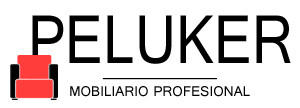Lights and Shadows in Aesthetics: Complete Guide for Optimal Lighting on your Beauty Bed
Lighting is a key element in any beauty bed. It provides the necessary visibility to perform treatments, allows for detail appreciation, and creates the right atmosphere. However, not all lighting is the same. To achieve optimal results, it’s important to have good lighting on the beauty bed.
Types of lighting for the beauty bed
There are various types of lighting that we can incorporate:
Ambient lighting
It lights up the entire room in a general manner. usually on the ceiling, creating a soft light without defined shadows. It contributes to a relaxed atmosphere.
Task lighting
It focuses on a specific area. It allows the professional to see precisely where the aesthetic treatment is being performed. For example, a light directed over the facial area where a mask is applied.
Indirect lighting
It does not shine directly on the skin, but bounces off other surfaces to create a softer, diffused light. Helps create a pleasant atmosphere.
Natural light
Takes advantage of lighting coming in through windows or skylights. It brings well-being and is ideal for daytime treatments.
Characteristics of good lighting on a beauty bed
The ideal lighting should meet certain requirements:
- Adjustable intensity: allows adjusting the amount of light as required.
- Appropriate color temperature: a warm temperature around 3000-4000 Kelvin provides a relaxed atmosphere.
- Good color rendering index (CRI): above 90, so colors look as natural as possible.
- Uniform light without hard shadows: achieved by combining different types of lighting.
- Ability to adjust the light direction: to focus it where needed.
- Flexible system: that allows incorporating different accessories like magnifying glasses, spotlights, etc.
Importance of good lighting on a beauty bed
Having an adequate lighting system is indispensable for several reasons:
- Allows performing treatments with precision, distinguishing all skin details.
- Facilitates choosing the correct tone cosmetics for each client.
- Creates the ideal relaxed atmosphere for beauty and wellness treatments.
- The client can see the treatment results optimally.
- Highlights the professionalism of the aesthetic center.
- Increases client satisfaction with the results.
- Reduces professional eye strain, allowing them to work comfortably.
Beauty bed: lighting options
When equipping a beauty bed there are several lighting options available:
LED lamps
They are the most popular option thanks to several advantages:
- High brightness with low energy consumption
- Long lifespan, 40,000 to 50,000 hours
- Do not emit heat, avoiding skin overheating
- Compact size
- Possibility toadjust the intensity and tone of light
Halogen lamps
They provide a lot of light power but have some disadvantages:
- High electrical consumption
- Generate heat, which can be uncomfortable
- Shorter lifespan, around 2000 hours
- Require more space on the beauty bed
Natural light
Taking advantage of sunlight through well-placed windows can be an interesting and sustainable option. The orientation must be considered to avoid reflections and excessive intensity.
Tips for improving lighting
Some recommendations for achieving optimal lighting:
- Combine task lighting and ambient light to obtain the best result.
- Place the beauty bed near a window to take advantage of natural light when possible.
- Use high-quality LED lamps, with a CRI above 90.
- Position lamps on either side of the beauty bed to avoid shadows on the face.
- Install a dimmer to easily regulate the intensity of the lights.
- Orient lamps in different directions to achieve uniform lighting.
- Add accessories like magnifying glasses or spotlights for working on specific details.
- Keep lamps clean and replace bulbs at the end of their lifespan.
Frequently asked questions about lighting on a beauty bed
What light temperature is best for a beauty bed?
The ideal is a warm light, between 3000 and 4000 Kelvin, which provides a relaxed atmosphere. Cold light is too intense and can create hard shadows.
Is task lighting necessary in addition to ambient lighting?
Yes, task lighting is essential to focus on details during the performance of aesthetic treatments. It should be combined with softer ambient lighting.
What light power is needed in lamps?
It depends on the size of the beauty bed, but the usual is between 9 and 18W. Current LED lamps provide a lot of brightness with relatively low power.
How to avoid hard shadows when working?
By placing lamps on both sides of the beauty bed and combining lights from different angles, more uniform lighting is achieved, and shadows are softened.
Is LED or halogen light better?
LED lamps are the best option currently, for their energy efficiency, long lifespan, and minimal heat emission. Halogens tend to overheat the work environment.



